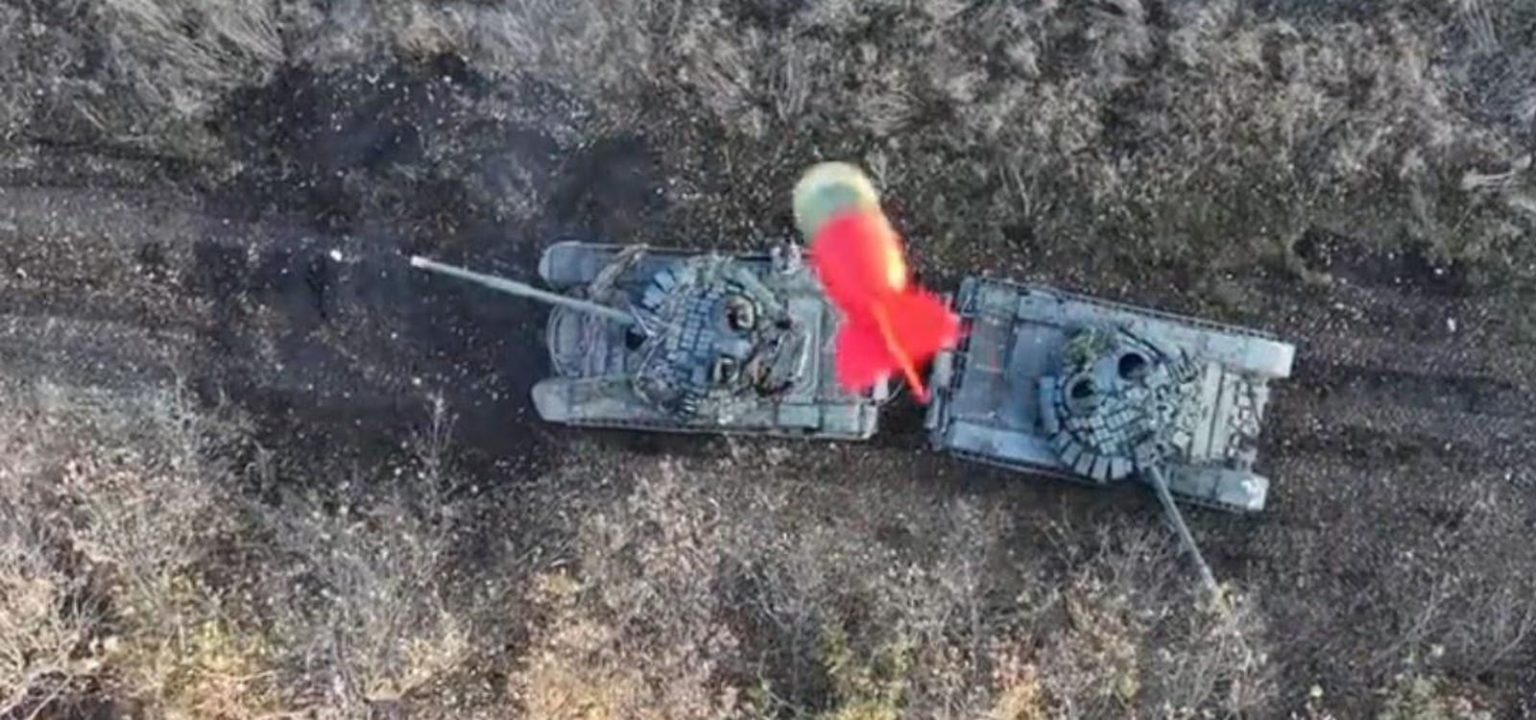A grenade-armed quadcopter drone belonging to the Ukrainian army’s 30th Mechanized Brigade spotted a Russian tank attempting a hit-and-run raid on Ukrainian positions north of Bakhmut recently.
The drone’s operator moved to intercept. And when a second Russian tank crew came to the first crew’s aid, the drone operator intercepted that tank, too—striking so close to the tank’s open gunner’s hatch that the rattled gunner, having narrowly survived, visibly shook with fear.
The one-two hits on a pair of multi-million dollar tanks, by a drone that might cost a few thousand dollars, underscores the new reality of Russia’s 22-month wider war on Ukraine. Small drones—reusable bomber models that drop grenades as well as explosives-laden, and expendable, first-person-view models—now are the biggest threat to armored vehicles on both sides.
The Russian and Ukrainian armed forces each employ thousands of drone operators, but the 30th Brigade drone bombardier who plinked those two tanks outside Bakhmut stands out in the crowd. They are very experienced, very talented—or both.
The 30th Brigade proudly posted an edited version of the drone’s video feed. At the start of the video, a solitary Russian tank rolls up on Ukrainian positions and fires a couple of rounds from its 125-millimeter main gun.
It’s apparent the tank is alone and unsupported by infantry or air-defenses. While single-tank ops are risky, they also aren’t uncommon in Ukraine. “The Russians often conduct gun raids with tanks when they detect troop rotations,” Jack Watling and Nick Reynolds noted in a study for the Royal United Services Institute in London.
To survive a solitary raid, a tank crew must move fast—and return to friendly lines before enemy drones and artillery dial in.
The Russian tank crew in the recent raid never stands a chance. The 30th Brigade bombardier has the Russians in their sights from the beginning—and tracks them as they accelerate their tank along a dirt trail, their turret rotated backward to cover their withdrawal.
A Russian T-72 or T-80 tank should be able to speed along at 40 miles per hour in its best forward gear. The raiding tank in the recent incident is moving fast as its crew races for safety.
Quadcopter bomber-drones drop unguided grenades. Which is why many drone bombing runs target vehicles that are idling, or already have been immobilized by mines or artillery. There are no fire-control systems on cheapo bomber drones. No cues to tell the operator how far to lead a moving vehicle to guarantee a hit.
And that’s why what happens next in the video is so remarkable. Maybe it’s luck. More likely, it’s skill. In any event, the 30th Brigade drone-op lobs a grenade from the moving drone and scores a direct hit on the moving tank. “This is one of the most ridiculously amazing feats I have ever seen from a drone pilot,” commented Andrew Perpetua, an open-source intelligence analyst.
It’s not clear what damage the grenade inflicts. Maybe it strikes the tank’s engine or a fuel tank. Regardless, the grenade immobilizes the tank. A second tank comes to the rescue; its crew attaches a cable and prepares to tow the damaged tank off the battlefield.
That’s when the 30th Brigade bombardier strikes again, dropping a second brigade onto the turret of the rescue tank. Both the gunner’s hatch and the commander’s hatch are open. Getting a grenade into either hatch might kill the crew and wreck the tank.
That’s not what happens. Instead, the bombardier narrowly misses—and strikes the delicate gunner’s sight, situated just inches from the gunner’s hatch. The rattled gunner knows he just escaped death by a few inches. His hands shake as he pulls shut his hatch.
The rescue tank still is mobile. The 30th Brigade’s video ends with the mobile tank towing away the immobile tank. Both tanks likely are repairable. But they’ll be out of action for days, weeks or months. Not a bad day’s work for one very talented drone operator, scoring bullseyes and near-bullseyes like a champ.
Read the full article here





